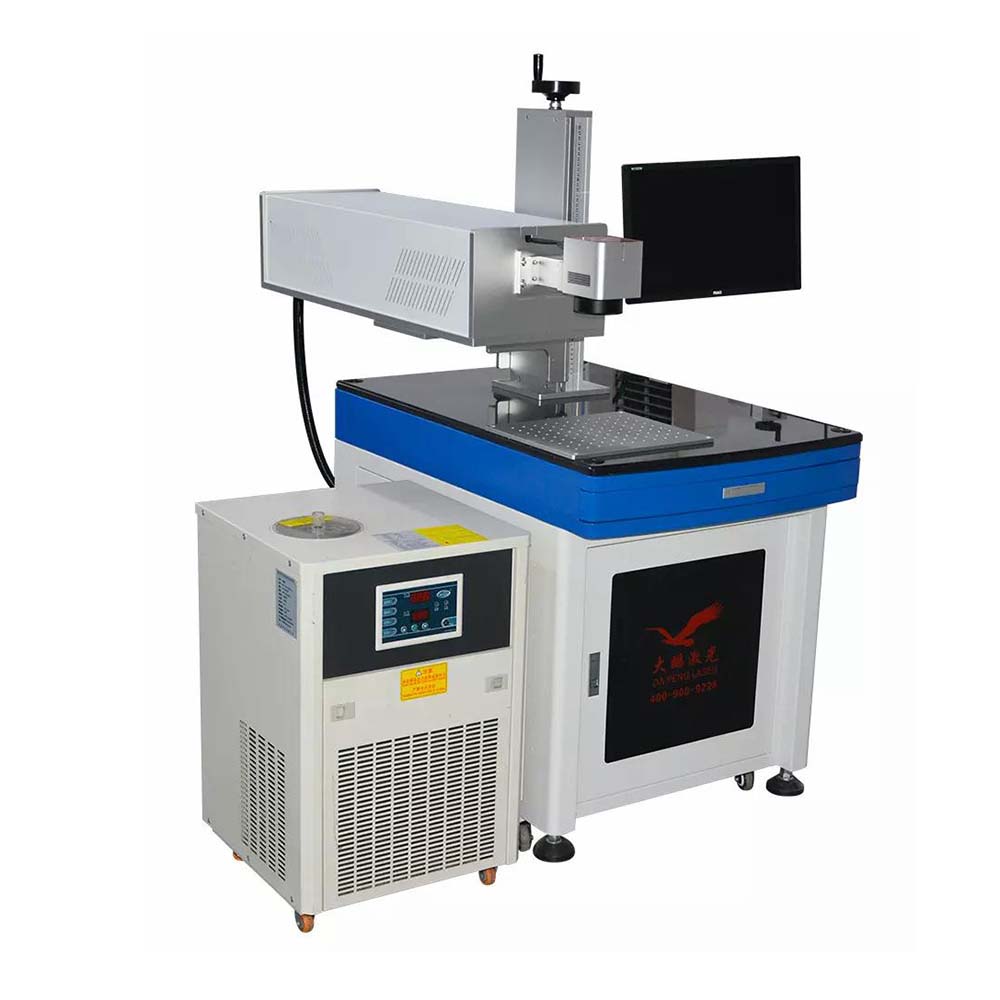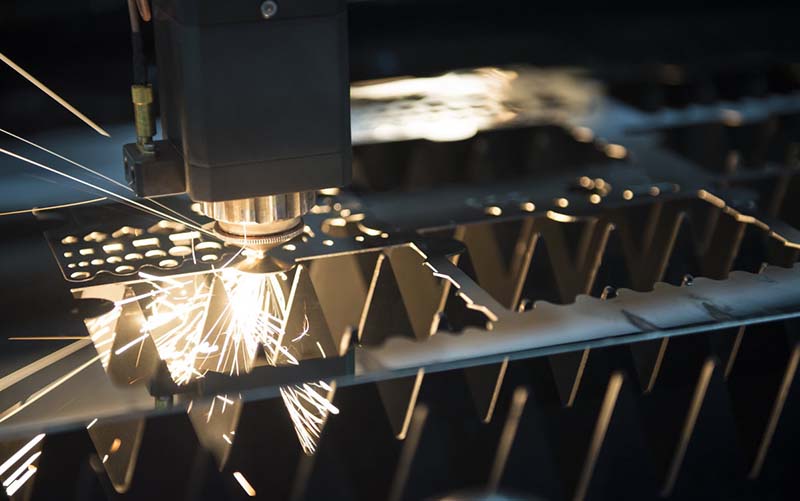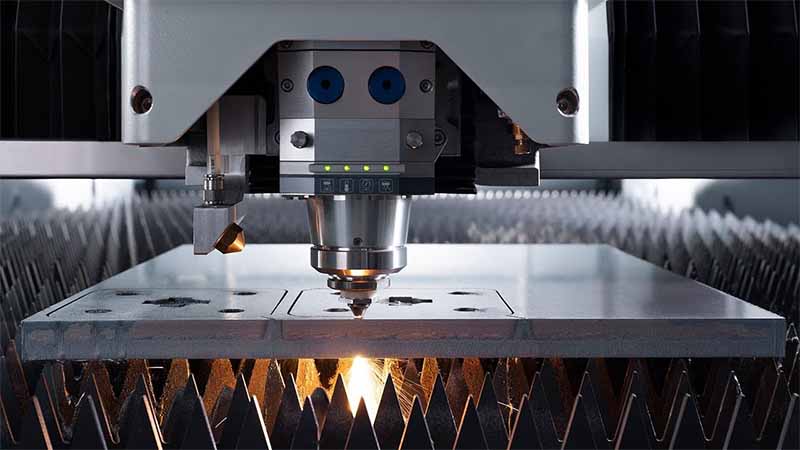The picosecond laser cutting machine has transformed the way industries process delicate and high-precision materials. Unlike traditional CNC cutting methods that often generate excessive heat and rough edges, picosecond lasers emit ultra-short pulses that drastically minimize thermal damage, delivering exceptionally smooth and precise cuts.
While conventional blade cutting is fast and low-cost, it suffers from poor material utilization and low yield. Its speed and accuracy drop significantly during complex or irregular-shaped cutting—often failing to handle sharp corners or intricate designs. CNC cutting, though more precise, is relatively slow and prone to creating residual stress along the edges of glass, compromising its fracture resistance. Additionally, both methods typically require post-processing steps such as grinding and polishing, which increase production time and costs.
Laser processing is often referred to as “cold processing” due to the extremely brief interaction time between the laser and the material. When pulse durations reach the picosecond or femtosecond scale, they effectively eliminate the influence of molecular thermal motion, avoiding thermal damage to surrounding areas. Picosecond laser “cold cutting” significantly reduces melting and the heat-affected zone, minimizing the formation of micro-cracks within the material.
As a non-contact machining method, picosecond laser cutting effectively prevents microcracks and chipping. Its ultra-short pulse duration allows cutting to be completed before heat can diffuse, resulting in virtually no residual stress. This greatly enhances the mechanical strength of glass edges and ensures superior cut quality.
| Items | Blade Wheel Cutting | CNC Cutting | Picosecond Laser Cutting and Drilling |
| Edge Chipping | >100μm | ~40μm | <10μm |
| Accuracy | >70μm | 30μm | <10μm |
| Efficiency | Fast | Slow | Very Fast |
| Strength (4-Point Bending Load) | <10N | >15N | 15N |
| Surface Roughness (Ra) | >100μm | >1μm | <1μm |
| Irregular Shapes | Unable to cut small sizes, shaped patterns | Unable to cut U-shape | Cutting any size and shape |
| Production Yield | Low | High | High |
| Particulate Contamination | Yes | Yes | No |

Advantages of UV Picosecond Laser Cutting
1. Minimal Heat-Affected Zone (HAZ)
Due to the ultra-short pulse duration, there is virtually no time for heat to diffuse into the surrounding material. As a result, the heat-affected zone is negligible. This makes UV picosecond lasers especially suitable for processing heat-sensitive materials such as ceramics, plastics, semiconductors, and high-melting-point metals—where conventional cutting methods often cause thermal damage or deformation.
2. Ultra-High Precision Machining
The minimal thermal impact allows UV picosecond lasers to achieve extremely high precision, down to the micron or even nanometer scale. This makes them an ideal solution for precision micromachining applications. In industries such as electronics and semiconductors, where quality and dimensional accuracy are critical, UV picosecond lasers offer unmatched performance.
3. Broad Material Compatibility
Picosecond laser cutter are capable of processing a wide variety of materials, including metals, ceramics, glass, and semiconductors. They are particularly effective with hard, brittle, or high-melting-point materials—where traditional methods either fail or cause excessive damage.
4. High Processing Efficiency
Although the energy per pulse is relatively low, the repetition rate can reach the megahertz range, enabling high throughput without compromising precision. This balance of accuracy and efficiency makes UV picosecond lasers highly suitable for industrial-scale production.
UV picosecond laser cutting has found widespread applications in microelectronics, semiconductors, and advanced energy materials. It brings a revolutionary shift to precision manufacturing—enhancing cutting quality, minimizing thermal damage, and supporting the production of next-generation high-tech components.

Picosecond Laser Glass Cutting
Infrared picosecond laser cutting machines have rapidly become a preferred solution in the glass processing industry, thanks to their exceptional cutting performance and outstanding precision. This advanced technology not only significantly improves processing efficiency and finished product quality, but also opens up new possibilities for handling complex and challenging glass materials. Infrared picosecond lasers represent a new standard for precision, reliability, and versatility in modern glass manufacturing.
Picosecond Laser Glass Cutting for Glass Types
1. Soda-Lime Glass
As the most common base glass, soda-lime glass is widely used in architectural decoration, home furnishings, and household appliance panels.
2. Borosilicate Glass
Renowned for its excellent thermal stability and chemical resistance, borosilicate glass is ideal for laboratory glassware, cookware, and other high-temperature applications.
3. Fused Silica (Quartz) Glass
With exceptional heat resistance and optical transparency, quartz glass plays a critical role in semiconductor processing, optical systems, and scientific research.
4. Sapphire Glass
Second only to diamond in hardness, sapphire glass offers high strength and superior light transmission, making it ideal for luxury watch covers and smartphone camera lens protection.
5. Specialty Functional Glass
Includes advanced materials such as bulletproof glass, conductive glass, and optical fiber substrates. These applications demand extremely high cutting precision and edge quality—areas where infrared picosecond lasers demonstrate unparalleled technical advantages.
Thanks to the ultra-short pulse duration of picosecond lasers, the heat generated during interaction with glass dissipates almost instantly. This prevents thermal damage to the material, preserving the original structure and properties of the glass. Unlike traditional thermal processing methods, picosecond laser cutting avoids stress concentration, microcracks, and other defects.
Moreover, as a non-contact processing method, picosecond laser cutting eliminates the risk of surface scratches, pressure marks, or chipping caused by mechanical tools—ensuring a cleaner, higher-quality finish.
picosecond laser glass cutting

Applications of Picosecond Laser Cutting Machine
Picosecond lasers play a vital role in the cutting of flexible printed circuits (FPCs), aligning perfectly with the ongoing trend toward thinner, lighter, and more flexible electronic devices. Compared with traditional processing methods, picosecond lasers offer significantly higher precision and minimal thermal damage, making them ideal for the intricate machining requirements of high-density integrated circuit boards. The 1064 nm picosecond laser is not only suitable for FPC window opening and PCB cutting, but also excels in complex shaping of hard and brittle materials such as ceramic substrates and silicon wafers. The resulting cuts are finely detailed, with smooth edges and no need for post-processing—greatly enhancing both production efficiency and finished product quality.
PCB Industry
Picosecond laser cutting machines are widely used in PCB depaneling and are compatible with various materials, including FR4, stainless steel stiffeners, FPCs, rigid-flex boards, and glass fiber boards. UV picosecond lasers enable high-precision, high-efficiency board separation, ensuring minimal material stress and superior edge quality.
Thin Film Material Cutting
Ideal for transparent plastic films such as PET, PI, and PP, as well as composite films, picosecond laser systems allow for clean cutting, precise drilling, and fine etching. The process yields smooth edges without burns or warping, ensuring excellent processing quality for precision applications.
Conductive Metal Film Cutting
Picosecond laser systems also enable high-accuracy cutting, etching, and resistance trimming of conductive metal films composed of copper, aluminum, ITO, silver paste, and more. This meets the increasing functional and precision requirements of modern electronic devices.
Thin Metal Cutting
For metal sheets under 0.2 mm in thickness—such as copper foil, aluminum foil, stainless steel, and various alloys—UV picosecond lasers can perform burr-free, low-carbonization, and deformation-free precision cutting. These capabilities make them ideal for applications in military components, photovoltaic copper foils, and other advanced manufacturing sectors.
Ceramic Substrate Cutting
Ceramic materials such as alumina (Al₂O₃) and zirconia (ZrO₂) are widely used as substrates in the electronics industry due to their outstanding physical and chemical properties. Picosecond laser machines can execute high-precision cutting and drilling on ceramic substrates, producing smooth, aesthetically pleasing edges that meet the stringent quality and performance standards of high-end electronics.
Medical Applications
Picosecond laser cutting also finds important applications in the medical field, including precision soft tissue removal, mole and skin lesion treatment, and the removal of micro vascular tumors. It provides a highly accurate and safe solution for minimally invasive surgeries.

UV Picosecond Laser Cutter
Dapeng Laser specializes in high-precision micro-processing, and its picosecond laser cutting machines adopt ultra-short pulse laser technology to deliver high energy density with an extremely low heat-affected zone (HAZ). This ensures precision cutting with no cracks, no melted edges, and no residual stress. The machines are widely used in advanced applications such as FPC window opening, ceramic scribing, glass cutting and drilling, precision film cutting, and micro QR code marking. With ultra-fine results and no need for post-processing, they are the ideal solution for the flexible electronics and precision manufacturing industries.
In the processing of brittle materials or applications requiring extremely high marking precision, picosecond lasers provide exceptional control, achieving superior results that easily meet diverse and complex manufacturing needs.
For micro and invisible QR code marking, the high resolution and accuracy of picosecond lasers ensure clear, scannable marks—offering a unique and reliable identity solution for traceability and anti-counterfeiting.
In ceramic drilling and scribing, picosecond lasers allow for precise, clean holes and fine lines that not only improve the visual quality but also enhance functionality.
When it comes to the precision cutting of thin and film-based materials, picosecond lasers deliver outstanding performance—efficient, contact-free, and damage-free—making them an indispensable tool in high-end manufacturing environments.
Features of UV Picosecond Laser Cutting Machines
High Precision
Picosecond laser cutters offer micron-level cutting accuracy, making them ideal for the fabrication of micro-holes and intricate structures in advanced manufacturing.
High Speed
With ultra-short pulse durations, picosecond lasers enable high-speed cutting, significantly improving production efficiency without compromising precision.
Superior Edge Quality
The cutting edges produced are smooth and clean, with no burrs or thermal damage—eliminating the need for secondary processing.
Wide Material Compatibility
Picosecond laser cutting systems are suitable for a broad range of materials, including metals, non-metals, plastics, rubbers, ceramics, glass, and even transparent or brittle substrates.
Micro-hole and Precision Processing
Picosecond laser cutters excel in efficient and precise micro-hole processing. In the PCB industry, they are widely used for laser depaneling, suitable for materials such as FR4, stainless steel stiffeners, FPCs, rigid-flex boards, and glass fiber boards.

Beyond PCBs, picosecond laser cutters are also used for stripping, etching, engraving, scribing, drilling, and cutting on thin film materials, glass, ceramics, plastics, and other transparent or brittle substrates—providing high-quality results with minimal thermal impact.
Picosecond laser cutter deliver ultra-fast, low-thermal-impact cuts on a wide range of materials makes it invaluable for electronics, medical devices, glass processing, and more. If you’re looking to upgrade your ultra-fine production with a reliable laser cutting solution, DP Laser’s picosecond laser cutting and drilling solutions offer cutting-edge technology, exceptional quality, and tailored support for your specific application needs.



